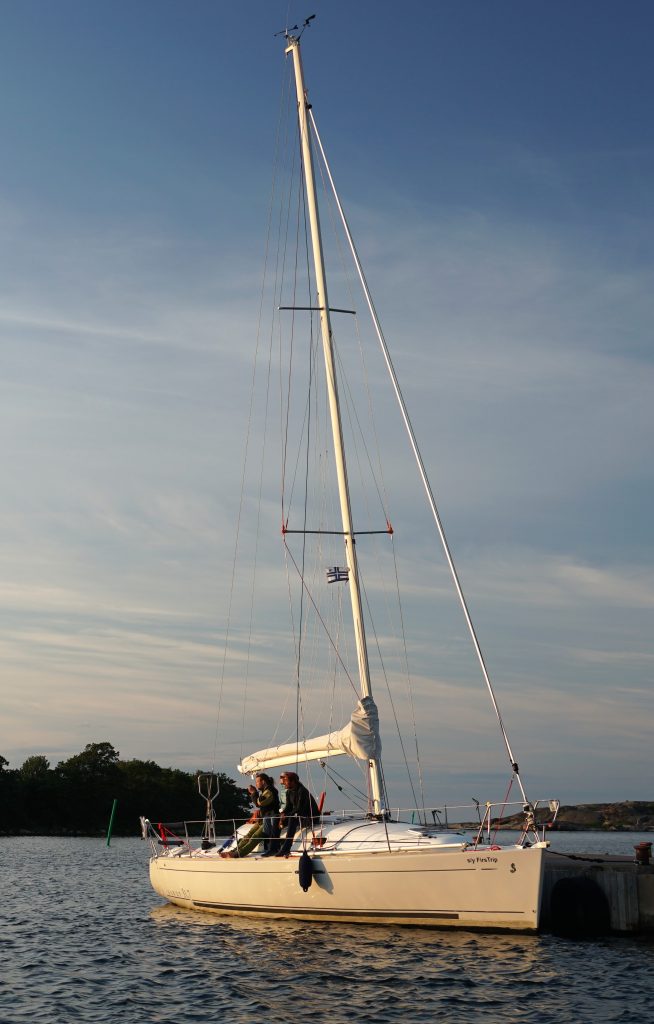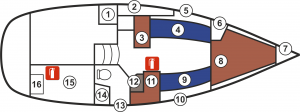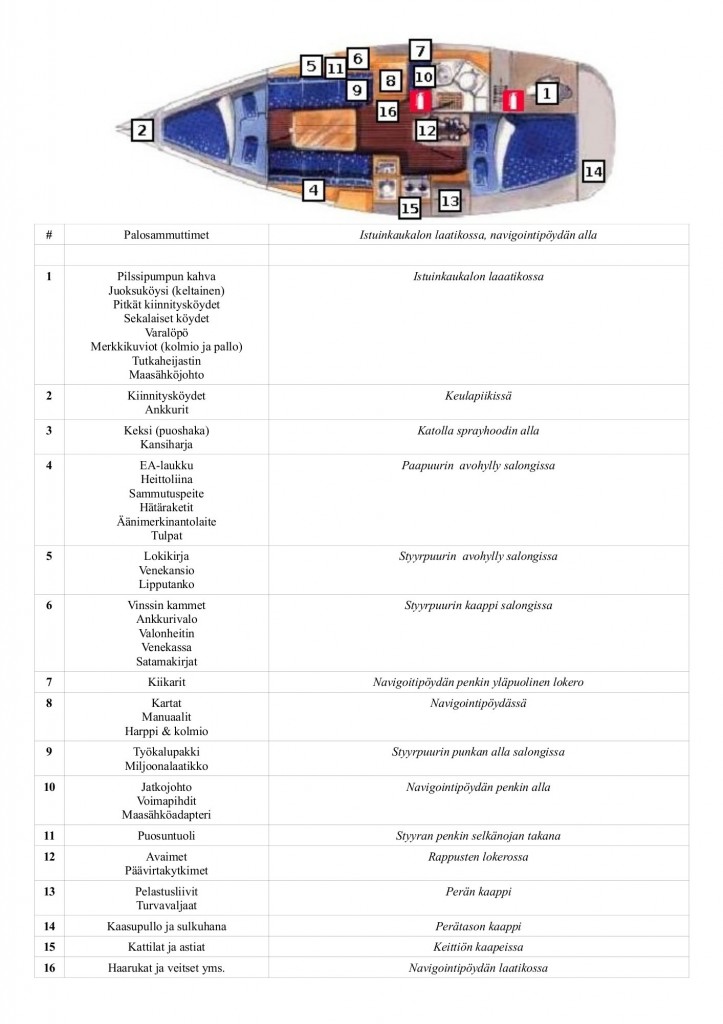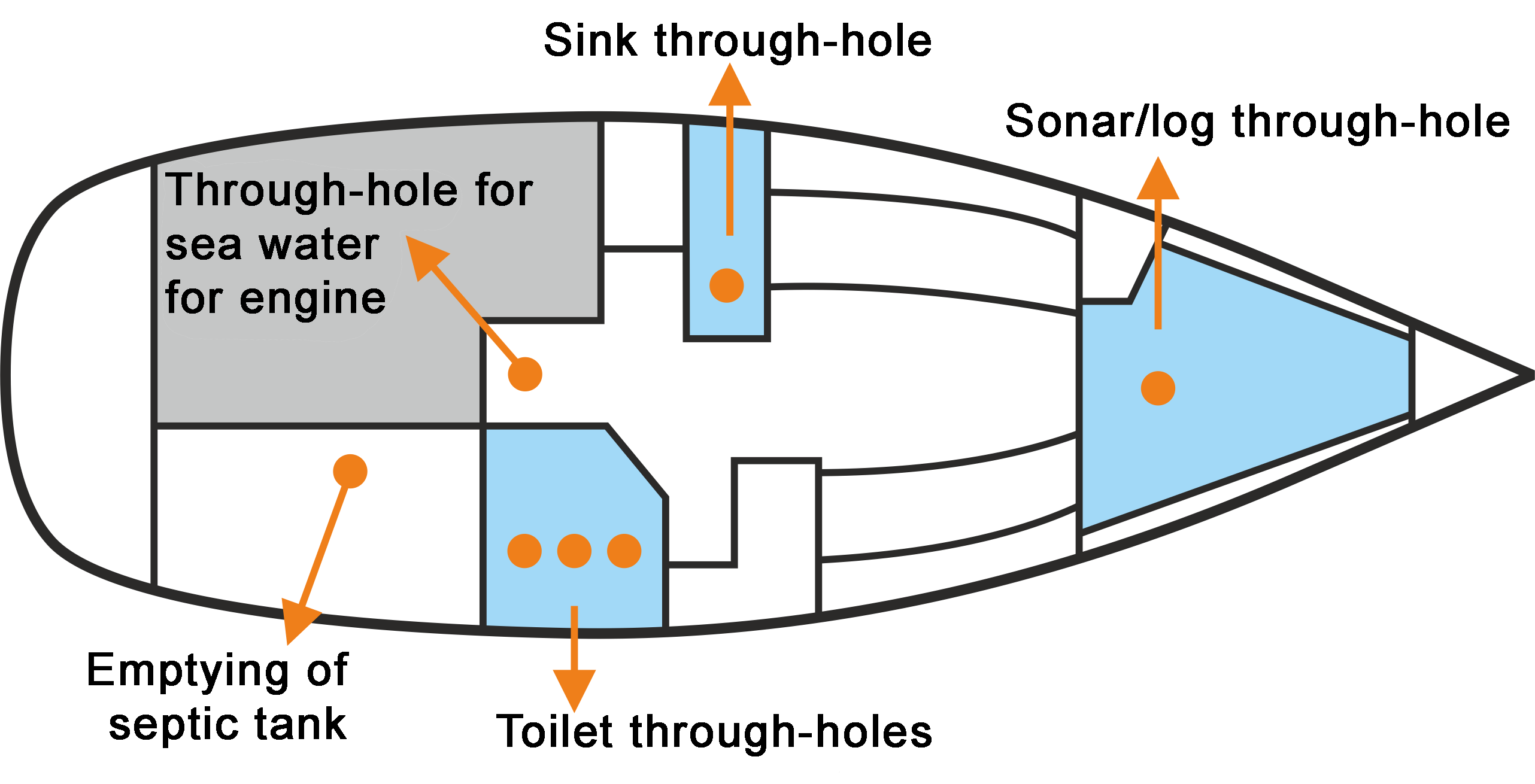
More familiarly known as First is the flagship of our club. The boat is in the club with the title of a coastal cruiser and it is used for the club’s long sails. First’s skipper is required to complete Coastal Skipper certificate. The boat was purchased in the autumn of 2018 and put into use in the 2019 season.
| Model Designer Manufacturer |
First 31.7 Finot Conq et Associés Beneteau SA |
Year of manufacturing Acquired to the club |
2007 2018 |
| Sail number Registration number |
FIN-12033 U317 |
Radio call sign VHF-marine radio number |
OH8382 230036190 |
| Length overall boat LOA Length at waterline LWL |
9.50 m 8.80 m |
Hull Deck |
Laminate |
| Width Draught Height Alituskorkeus |
3.23 m 1.90 m 14.50 m Not measured |
Weight (esitepaino) Displacement (uppouma varustein) Measured with gear |
3750 kg 4915 kg Not measured |
| LYS-mittaluku | – | Keel | Cast iron bulb 1025 kg |
| Engine Power Range |
Yanmar 3YM20C (2007) 20.5 hv Max X M @ X.X kn |
Fuel tank Consumption |
Diesel 57 l 1.5 l/h @ 2200rpm / x.x kn 3.2 l/h @ 3000rpm / x.x kn |
| Inspection class | Life vests 3rd class Everything else 2nd class |
Sleeping berths | For 6 people |
| Sail surface area | Fresh water tanks | 1x 170 l + spare canister | |
| Sails | NorthSails (main + G1, 2020) Main sail 25.5 m² Roller furling genoa 140% (A=29.31m²; I=12,09m; J=3.50m; Nordac Radian NDR7.5) Spinnaker (~65 m²) Albatross spare sails (2007) |
||
| Mooring | 2x Mooring ropes with quick locks and rubber springs 2x Long mooring lines Stern line with springs Running rope 50m Anchors (bruce, grapnel, chain, sinking rope 50m) 7x Fenders |
||
| Electrics | VHF (DSC-, GPS- and AIS-receiver), FM-radio Ground power sockets 230VAC shuko, 2-battery system with ground power charging, Ground power cable, extension cable, adapter 12V cigarette lighter socket |
||
| Safety | Boating life vests (50-70kg, 4×70-90kg, 90+kg, spare), 2x safety harnesses. First aid kit, 2x throw lines, life ring with indication light, emergency flare lights, air horn, power pliers, hacksaw, leak plugs, 1x manual bilge pump, fire extinguishers (2kg+6kg), 1x extinguishing blanket | ||
| Navigation | Compass, log, sonar, wind vane, binoculars, search light, navigation triangle, nautical chart sets (A+B+C, Sweden, Estonia), harbour books, navigation lights, engine headlight, anchor light, day marks, radar reflector, chart plotter | ||
| Kitchen | Gas stove and oven, pressurised water pump, plates, cups, cutlery, chopping board, pots and pans, dishwashing bowl, dining table | ||
| Comfort | Webasto ThermoTop EVO 3900 heater (diesel, 2015), separate water-WC, septic tank, sleeping mattresses, indoor lighting | ||
| Maintenance and tools | Tool box and spare parts box. Sail tape. Axe, frame saw. Bosun’s chair, boat hook, broom, deck brush, bucket. Spare impeller for engine, alternator belt | ||
| Other equipment | Log book, Finnish flag with the logo of TRIP, courtesy flags (Sweden, Estonia, Latvia), spare diesel canister, spare gas container, spare engine oil, cleaning equipment, toilet paper | ||
Diagram for location of equipment

Diagram is being updated (underneath is the old diagram for TripTonic in Finnish); basic principle = starboard side for boat equipment, port side for other equipment
Through-holes
Wind limits of the sails
This section for the wind limits of the sails of FirsTrip is being developed.
limits are already quite sporty and side weights are more than necessary. The choice is influenced by many factors, starting with the skills, alertness and fatigue of the crew, all the way to the development of the weather, the nature of the waves and the covertness of the sea area.
The properties of ElecTrip’s sails run out already before the storm readings. Those interested in storm and open sea sailing should check out Adlard Coles: Heavy Weather Sailing, which contains stories about storm sailing on oceans and a section on boat technology.
https://www.youtube.com/watch?v=hriGMouqiWg
If you are unsure, choose the smaller sail option. If you need more speed -> estimate the development of the weather conditions -> cover given by land -> mood and alertness of the crew -> the space required by the sail change and other boat traffic -> if everything is OK -> increase sail surface area.
You can always stay at the port. Wait for favorable weather or come home by car. Report the situation and the next skipper will take it into account.
Trimming
1. Loosen until the sail flutters. Tighten it a little.
2. Look at the sail.
3. In light wind conditions the sail can stay quite baggy. In heavier wind, hard-furled sails.
5. The top thread of the main sail is shy.
6. The bow is moved towards the side of the fluttering thread.
More on the topic in Finnish https://www.fe83.org/files/Purjeiden_trimmausta.pdf
http://suomenalbinpurjehtijat.purjehdusportaali.com/Tiedostoja/VegaVinkit_Purjehdi_Vegalla_osa_7.pdf
http://www.fe83.org/gallery/view_photo.php?full=1&set_albumName=album125&id=WB_news_1_95_s2


